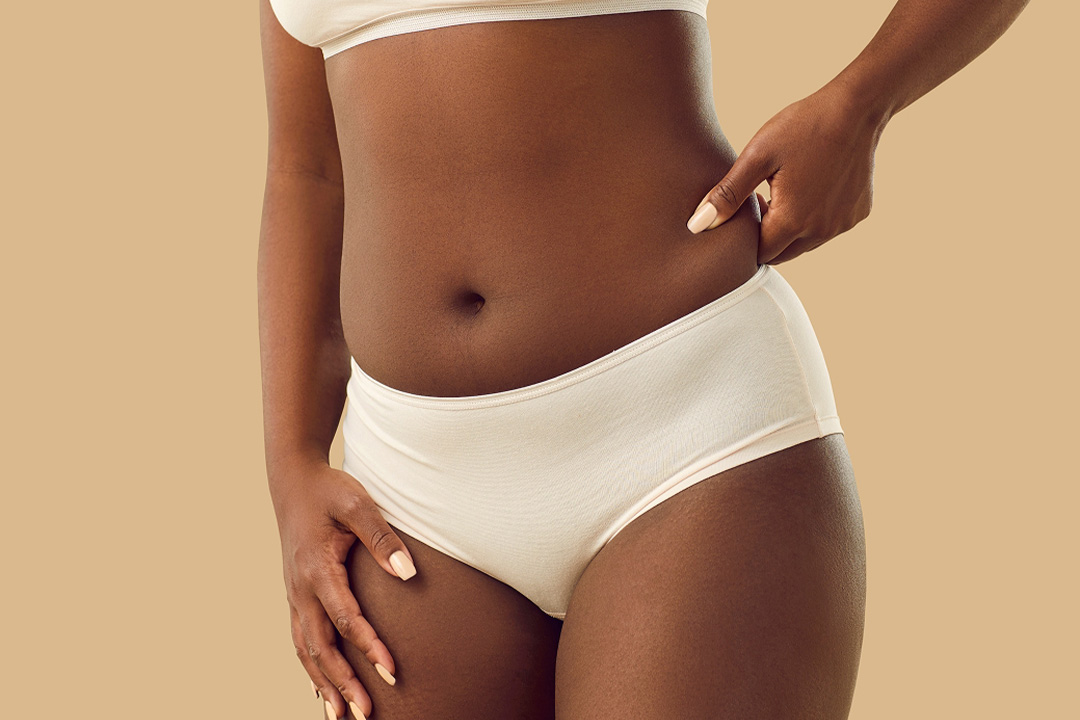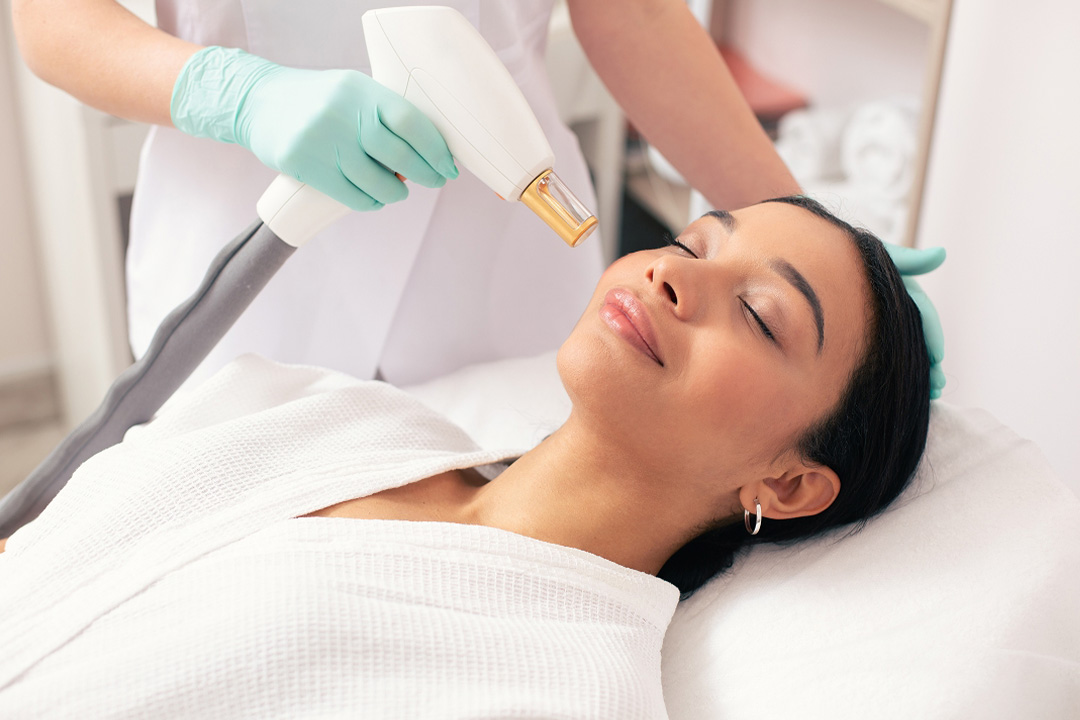Types of plastic surgery procedures

Body contouring procedures
Refine your shape with personalized body contouring by our board-certified plastic surgeons. Popular procedures include:
- Arm lift: Tones and tightens upper arms.
- Gender-affirming top surgery: Provides chest masculinization or feminization with compassionate care.
- Labiaplasty: Enhances comfort and confidence.
- Liposuction: Removes stubborn fat for a sculpted look.
- Thigh lift: Contours and firms the thighs.
- Total body lift: Offers full-body reshaping.
- Tummy tuck (abdominoplasty): Flattens and firms the abdomen.

Breast plastic surgery procedures
Enhance, restore or reduce with expert breast surgery tailored to your goals. Options include:
- Breast augmentation: Adds volume with implants or fat transfer.
- Breast lift: Elevates and reshapes.
- Breast reconstruction: Restores form after mastectomy or trauma.
- Breast reduction: Relieves discomfort and balances proportions.
- Breast revision: Updates or corrects previous surgeries.
- Fat grafting: Provides natural enhancement using your own fat.
- Gynecomastia surgery: Reduces male breast tissue.
- Implant removal: Ensures safe removal of implants.
- Inverted nipple repair: Restores natural appearance.

Facial plastic surgery procedures
Rejuvenate your appearance while preserving your natural beauty. Common procedures include:
- Brow lift: Smooths lines and lifts brows.
- Chin implant: Enhances facial balance.
- Ear setback (otoplasty): Corrects protruding ears.
- Eyelid lift (blepharoplasty): Refreshes tired eyes.
- Facelift: Delivers comprehensive facial rejuvenation.
- Neck lift: Defines the neck and jawline.
- Rhinoplasty: Reshapes the nose for form and function.
- Facial gender-affirming procedures: Support feminization or masculinization goals.

Nonsurgical aesthetic treatments
Refresh your appearance with noninvasive cosmetic treatments that deliver natural-looking results and minimal downtime:
- Botox injections: Smooth wrinkles and prevent new ones.
- Dermal fillers: Restore volume to key facial areas.
- Kybella: Reduces under-chin fat.
- Laser treatments: Improve skin tone and texture.
- PRP injections: Stimulate natural rejuvenation.
Plastic surgery FAQ
Plastic surgery is a broad specialty that includes both cosmetic and reconstructive procedures.
- Cosmetic surgery focuses on enhancing appearance (for example, rhinoplasty and breast lift).
- Reconstructive surgery restores function and form after trauma, illness or birth defects (for example, cleft lip repair and breast reconstruction).
People choose plastic surgery for many reasons, including:
- Correcting asymmetry or features they’re self-conscious about
- Enhancing self-confidence
- Restoring appearance after life changes, such as pregnancy or weight loss
- Reversing signs of aging
Every decision is personal and should be made in consultation with a qualified plastic surgeon.
Start by talking to a certified plastic surgeon or cosmetic surgeon near you. Our team of experts will listen to your goals, understand your needs and help you choose the best procedures to look and feel your best.
Recovery time after plastic surgery depends on the type of surgery, your overall health and how closely you follow post-operative care instructions. Most patients begin to feel better within a few days, but full healing can take several weeks to months.
For example:
- Botox injections and fillers typically have minimal downtime.
- Liposuction and tummy tucks may require 2–6 weeks of recovery.
- Breast reconstruction or facial plastic surgery may take longer due to complexity.
Your plastic surgeon will provide personalized guidelines to help you heal safely and achieve the most natural-looking results.
To reduce swelling after plastic surgery or cosmetic procedures:
- Apply cold compresses as directed.
- Avoid strenuous activity.
- Follow your plastic surgeon’s post-op directions closely.
- Keep the surgical area elevated.
- Stay hydrated and eat anti-inflammatory foods.
Swelling is a normal part of healing and typically subsides within a few weeks.
Botox injections are a nonsurgical cosmetic treatment that helps reduce wrinkles and frown lines. While not considered plastic surgery, Botox is often offered by cosmetic surgeons and aestheticians as part of a broader suite of injectable treatments.
Breast reconstruction restores the shape and appearance of the breast after a mastectomy or injury. It may involve implants, tissue from another part of the body or a combination of both. The goal is to help patients feel more confident after breast cancer or trauma.
A tummy tuck (abdominoplasty) removes excess skin and tightens abdominal muscles, often after pregnancy or weight loss.
Liposuction removes localized fat deposits but does not address loose skin or muscle separation.
These body-contouring procedures are often combined for comprehensive results.
Rhinoplasty is a facial plastic surgery procedure to reshape the nose for cosmetic or medical reasons. It involves adjusting bone and cartilage through small incisions, often inside the nose.
Here are some common types of rhinoplasty:
- Cleft lip nasal repair corrects nasal issues from a cleft lip.
- Cocaine nose repair restores structure after drug-related damage.
- Ethnic rhinoplasty is customized for patients of diverse backgrounds.
- Nasal reconstruction rebuilds the nose after injury or cancer removal.
- Revision rhinoplasty fixes problems from a previous nose surgery.
- Saddle nose repair rebuilds a collapsed bridge using cartilage.
- Septal perforation repair closes a hole in the nasal wall.
- Septoplasty straightens a deviated septum to improve breathing.
- Vasculitis repair reconstructs the nose after inflammation-related damage.
*Cosmetic, plastic and reconstructive services vary by location. Check with your doctor’s office or health plan for specific information.
Optum arranges for or provides medical and other clinical services in accordance with laws in each state it operates. Physicians or providers referenced on this website are to those who are either part of independent practices or to those medical practices managed by or owned, where permitted, by Optum. In all circumstances, physicians and other licensed professionals have complete authority for all medical decision-making and patient care. Optum does not determine or set the methods, standards, or conduct of the practice of medicine or health care provided by any of the practices or their physicians or other licensed professionals.




